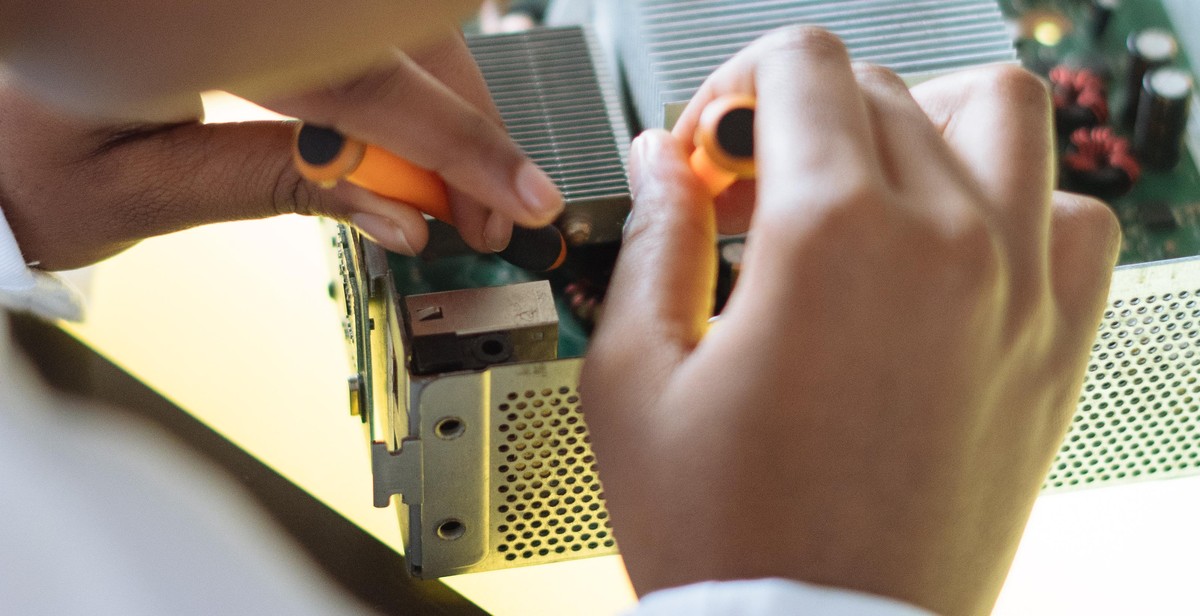A Deep Dive into Aquaponics: Sustainable Farming of the Future
Aquaponics, a combination of aquaculture and hydroponics, is an innovative and sustainable farming method that is gaining popularity worldwide. This system creates a symbiotic relationship between fish and plants, where fish waste provides essential nutrients for plant growth, while plants filter and purify the water for the fish. The result is a closed-loop ecosystem that requires less water, space, and resources compared to traditional farming methods.
What is Aquaponics?
In aquaponics, fish are raised in tanks, and their waste, rich in ammonia, is broken down by beneficial bacteria into nitrates and nitrites. These byproducts are then absorbed by plants as nutrients, effectively fertilizing them. The plants, in turn, filter the water, removing toxins and providing clean, oxygenated water back to the fish. This natural process eliminates the need for synthetic fertilizers, pesticides, and excessive water use, making aquaponics an environmentally friendly farming technique.
Benefits of Aquaponics
Aquaponics offers numerous benefits that make it a sustainable farming method for the future. Firstly, it requires up to 90% less water compared to traditional soil-based agriculture, making it ideal for regions facing water scarcity. Additionally, aquaponics eliminates the need for chemical fertilizers and pesticides, reducing the environmental impact and producing healthier, chemical-free crops.
Furthermore, aquaponics allows for year-round cultivation, as it can be implemented indoors or in controlled environments. This flexibility is especially valuable in areas with extreme climates or limited arable land. Moreover, this system promotes efficient use of space by vertically stacking the plants, maximizing productivity in small areas.
In conclusion, aquaponics is a sustainable farming method that combines aquaculture and hydroponics, creating a closed-loop ecosystem that benefits both fish and plants. With its water-saving capabilities, reduced environmental impact, and year-round cultivation potential, aquaponics holds great promise for the future of agriculture.

How Does Aquaponics Work?
Aquaponics is a sustainable farming method that combines aquaculture (fish farming) and hydroponics (cultivating plants in water). This innovative system creates a symbiotic relationship between fish and plants, where both benefit from each other’s presence.
The Aquaponics System Components
An aquaponics system typically consists of three main components:
- Fish Tank: This is where the fish are raised. The fish produce waste, which contains valuable nutrients for the plants.
- Grow Bed: The grow bed serves as the home for the plants. It is filled with a growing medium, such as gravel or clay pellets, which supports the plant roots.
- Water Pump and Pipes: The water pump circulates the water from the fish tank to the grow bed and back. Pipes facilitate the movement of water between the components.
In addition to these main components, an aquaponics system may also include a biofilter, which helps to break down fish waste into essential nutrients for the plants.
The Nitrogen Cycle in Aquaponics
The key to the success of aquaponics lies in the nitrogen cycle. It is a natural process that converts fish waste into usable nutrients for plants. Here’s how it works:
- Fish Waste: Fish excrete ammonia-rich waste into the water.
- Nitrification: Beneficial bacteria, known as nitrifying bacteria, convert the ammonia into nitrites and then into nitrates.
- Plant Uptake: The nitrates are absorbed by the plants through their roots, providing them with essential nutrients.
- Clean Water: The plants act as a natural filter, removing the nitrates from the water, which is then returned to the fish tank.
This continuous cycle ensures a balanced ecosystem, where the fish waste nourishes the plants, and the plants purify the water for the fish. The result is a highly efficient and sustainable farming system that requires less water and eliminates the need for chemical fertilizers.

Setting Up an Aquaponics System
Choosing the Right Location
When setting up an aquaponics system, selecting the right location is crucial for its success. Look for a spot that receives ample sunlight, as most plants thrive in at least 6-8 hours of direct sunlight per day. Additionally, ensure the location is easily accessible for maintenance and monitoring purposes.
Consider the climate of your region as well. If you live in an area with extreme temperatures, you may need to provide additional insulation or heating measures to maintain optimal conditions for both the fish and plants.
Selecting Fish and Plants
The choice of fish and plants is another important aspect of setting up an aquaponics system. When selecting fish, consider species that are hardy, adaptable to the water conditions, and suitable for consumption or ornamental purposes. Popular options include tilapia, trout, and catfish.
For the plants, choose those that thrive in a hydroponic environment and have nutrient requirements that can be met by the waste produced by the fish. Leafy greens like lettuce, herbs such as basil and mint, and fruiting plants like tomatoes and cucumbers are commonly grown in aquaponics systems.
Building the Aquaponics System
Building the aquaponics system involves several components that work together to create a sustainable ecosystem. Start with a fish tank, which should be large enough to accommodate the number and size of fish you plan to rear. Make sure it is properly insulated and equipped with a filtration system to maintain water quality.
Next, set up the grow beds or rafts where the plants will be grown. These can be constructed using materials like gravel, expanded clay, or floating rafts made of Styrofoam. The grow beds should be positioned above the fish tank to allow gravity to facilitate the flow of water and nutrients.
Finally, install a water pump and plumbing system to circulate the water between the fish tank and the grow beds. This will ensure a continuous supply of nutrients for the plants and oxygenation for the fish.
Overall, setting up an aquaponics system requires careful consideration of location, fish and plant selection, and proper construction of the various components. With the right approach, you can create a sustainable farming system that promotes efficient resource utilization and yields healthy produce.

Maintaining an Aquaponics System
Monitoring Water Parameters
Regularly monitoring water parameters is crucial for the success of your aquaponics system. Here are the key parameters to keep an eye on:
- pH Level: Maintain a pH level between 6.8 and 7.2 to ensure optimal nutrient absorption for plants and fish health.
- Ammonia and Nitrite Levels: Test ammonia and nitrite levels frequently to ensure they remain at low levels, as high levels can be harmful to fish.
- Dissolved Oxygen: Monitor dissolved oxygen levels to ensure there is enough oxygen for both fish and plants.
- Temperature: Maintain a stable temperature between 75°F and 85°F for optimal growth of both fish and plants.
Feeding the Fish and Plants
Proper feeding is essential to maintain a healthy and thriving aquaponics system. Consider the following guidelines:
- Fish Feeding: Feed your fish an appropriate amount of high-quality fish feed, ensuring they are fed at regular intervals throughout the day.
- Plant Feeding: Provide your plants with the necessary nutrients by adding organic matter, such as fish waste or compost, to the system.
- Monitoring Feeding: Observe the fish and plants closely to ensure they are receiving the right amount of food. Adjust the feeding regimen if necessary.
Cleaning and Maintenance
To keep your aquaponics system running smoothly, regular cleaning and maintenance are vital:
- Filter Cleaning: Clean the filters regularly to prevent clogging and maintain water quality.
- Plant Pruning: Trim and remove any dead or decaying leaves from your plants to prevent nutrient deficiencies and maintain overall plant health.
- Fish Health Check: Regularly inspect the fish for any signs of disease or stress. Remove any sick fish promptly to prevent the spread of illness.
- System Inspection: Conduct routine checks of the system components, such as pumps, pipes, and valves, to ensure they are functioning properly.
By diligently monitoring water parameters, providing proper feeding, and performing regular cleaning and maintenance, you can ensure the long-term success and sustainability of your aquaponics system.

Common Challenges in Aquaponics
Aquaponics is an innovative and sustainable farming method that combines aquaculture and hydroponics. While it offers numerous benefits, such as efficient use of resources and year-round crop production, there are several challenges that aquaponic farmers need to overcome for successful operations. In this section, we will explore the common challenges faced in aquaponics and how they can be managed effectively.
1. Managing Water Quality
Water quality is crucial for the health and well-being of both fish and plants in an aquaponics system. Maintaining optimal water parameters, such as pH, temperature, and dissolved oxygen levels, can be challenging. Factors like excessive fish waste, overfeeding, and inadequate filtration can lead to poor water quality, negatively impacting the growth of plants and the overall ecosystem.
To tackle this challenge, regular monitoring of water parameters is essential. Implementing a robust filtration system, including a biological filter and solids removal, helps maintain a balanced nitrogen cycle. Additionally, proper fish stocking density and feeding practices should be followed to prevent overloading the system with excess nutrients.
2. Preventing Diseases and Pests
Like any other form of agriculture, aquaponics is susceptible to diseases and pests. Fish diseases, such as bacterial infections and parasites, can quickly spread throughout the system and affect plant health. Furthermore, pests like aphids, whiteflies, and snails can damage crops and disrupt the delicate ecosystem.
To prevent diseases, regular fish health monitoring is crucial. Quarantining new fish before introducing them into the system helps minimize the risk of introducing pathogens. Implementing proper biosecurity measures, such as maintaining good hygiene practices and controlling water temperature, can also help prevent disease outbreaks.
For pest management, integrated pest management (IPM) techniques can be employed. This includes using beneficial insects, physical barriers, and organic pesticides only as a last resort, ensuring minimal impact on the aquatic ecosystem.
3. Balancing Fish and Plant Growth
One of the key challenges in aquaponics is achieving a balance between fish and plant growth. If the fish population is too high, it can lead to excessive nutrient accumulation, causing nutrient imbalances and stunted plant growth. Conversely, if the fish population is too low, the plants may not receive sufficient nutrients for optimal growth.
To overcome this challenge, careful planning and monitoring of fish stocking density and nutrient levels are essential. Regularly measuring nutrient levels in the system and adjusting fish feeding rates accordingly can help maintain the desired balance between fish and plant growth.
In conclusion, while aquaponics offers numerous benefits, managing water quality, preventing diseases and pests, and balancing fish and plant growth are common challenges that aquaponic farmers need to address for successful and sustainable operations.

The Future of Aquaponics
Aquaponics, the innovative system that combines aquaculture and hydroponics, is rapidly evolving and holds immense potential for the future of sustainable farming. Advancements in technology, scaling for commercial use, and its minimal environmental impact make aquaponics a promising solution for the agriculture industry.
Advancements in Aquaponics Technology
Technological advancements have revolutionized aquaponics, making it more efficient and easier to manage. Automation systems now monitor and control water parameters, nutrient levels, and fish health, optimizing the growth of both plants and fish. Sensors, actuators, and remote monitoring enable farmers to make real-time adjustments, resulting in better yields and reduced labor costs.
Scaling Aquaponics for Commercial Use
Traditionally seen as a small-scale practice, aquaponics is now being scaled up for commercial use. Farms are incorporating vertical farming techniques, maximizing space utilization and increasing production. Large-scale systems are being designed to meet the demands of urban areas, providing fresh and locally grown produce. With the ability to operate year-round, aquaponics offers a consistent supply of food, reducing the reliance on traditional agriculture and long-distance transportation.
Potential Environmental Impact
Aquaponics has a minimal environmental impact compared to conventional farming methods. The closed-loop system recirculates water, minimizing water usage by up to 90% compared to traditional agriculture. The absence of chemical fertilizers and pesticides reduces the risk of pollution, making aquaponics an eco-friendly alternative. Additionally, the symbiotic relationship between fish and plants creates a balanced ecosystem, promoting biodiversity and supporting natural processes.
In conclusion, the future of aquaponics looks promising. Advancements in technology continue to enhance the efficiency and productivity of aquaponic systems. The scalability of aquaponics for commercial use opens up opportunities for sustainable urban farming. With its minimal environmental impact, aquaponics offers a solution to the challenges faced by traditional agriculture, making it a viable and sustainable farming method for the future.
